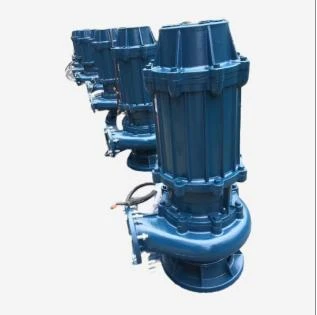English
- Afrikaans
- Albanian
- Amharic
- Arabic
- Armenian
- Azerbaijani
- Basque
- Belarusian
- Bengali
- Bosnian
- Bulgarian
- Catalan
- Cebuano
- Corsican
- Croatian
- Czech
- Danish
- Dutch
- English
- Esperanto
- Estonian
- Finnish
- French
- Frisian
- Galician
- Georgian
- German
- Greek
- Gujarati
- Haitian Creole
- hausa
- hawaiian
- Hebrew
- Hindi
- Miao
- Hungarian
- Icelandic
- igbo
- Indonesian
- irish
- Italian
- Japanese
- Javanese
- Kannada
- kazakh
- Khmer
- Rwandese
- Korean
- Kurdish
- Kyrgyz
- Lao
- Latin
- Latvian
- Lithuanian
- Luxembourgish
- Macedonian
- Malgashi
- Malay
- Malayalam
- Maltese
- Maori
- Marathi
- Mongolian
- Myanmar
- Nepali
- Norwegian
- Norwegian
- Occitan
- Pashto
- Persian
- Polish
- Portuguese
- Punjabi
- Romanian
- Russian
- Samoan
- Scottish Gaelic
- Serbian
- Sesotho
- Shona
- Sindhi
- Sinhala
- Slovak
- Slovenian
- Somali
- Spanish
- Sundanese
- Swahili
- Swedish
- Tagalog
- Tajik
- Tamil
- Tatar
- Telugu
- Thai
- Turkish
- Turkmen
- Ukrainian
- Urdu
- Uighur
- Uzbek
- Vietnamese
- Welsh
- Bantu
- Yiddish
- Yoruba
- Zulu
Telephone: +86 13120555503
Email: frank@cypump.com
Oct . 22, 2024 08:27 Back to list
Effective Solutions for Pumping Slurry in Various Industrial Applications
Understanding Slurry Pumps A Critical Element in Fluid Transport
In various industrial applications, the effective transport of mixed media has become a crucial factor for operational efficiency. This is particularly true for slurry, which is a mixture of solid particles suspended in a liquid, commonly used in mining, construction, and wastewater treatment. At the heart of this process lies the slurry pump, a vital piece of equipment designed to manage the challenges posed by such demanding conditions.
What is a Slurry Pump?
A slurry pump is specifically engineered to handle the movement of thick, heavy materials, effectively transporting slurries from one location to another. Unlike standard pumps, slurry pumps must accommodate the abrasive nature of solid particles, which can lead to increased wear and tear on the components. As a result, these pumps are built using durable materials, often featuring resistant alloys and specially designed impellers that enhance performance life.
Applications of Slurry Pumps
Slurry pumps find their primary applications in the mining industry, where they are utilized to transport slurries of ore, tailings, and other mixtures. The extraction process generates a significant amount of waste material, and slurry pumps are crucial for managing the resulting slurries. They facilitate the efficient removal of tailings from processing plants, ensuring minimal environmental impact and compliance with regulations.
In addition to mining, slurry pumps are essential in construction, especially in projects involving the excavation of soil and rock. They help transport mixtures of water, cement, sand, and other materials necessary for constructing foundations or other structures. In wastewater treatment facilities, slurry pumps are used to move sludge, a byproduct of the treatment process, thereby ensuring that the plants run efficiently and effectively.
Features of Slurry Pumps
When selecting a slurry pump, several critical features must be considered
1. Durability and Material As slurries often contain abrasive particles, the materials used in pump construction should be highly durable. Common materials include high-chrome iron and rubber linings.
pumps slurry

2. Capacity and Size Slurry pumps come in various sizes and capacities, allowing them to handle different flow rates and solid concentrations. Choosing the right pump based on the specific requirements of the application is essential to ensure optimal performance.
3. Pump Design The design of the pump, including the impeller and volute, can significantly influence efficiency. A well-designed slurry pump will minimize turbulence, reducing energy consumption and wear.
4. Maintenance and Accessibility Considering the wear and tear on slurry pumps, easy maintenance and accessibility for repairs are crucial for minimizing downtime. Features like quick-release covers and wear-resistant components can enhance serviceability.
Challenges in Slurry Pumping
Despite their robust design and engineering, slurry pumps face several challenges. One of the most significant concerns is the potential for wear and tear due to the abrasive nature of the materials they transport. Regular maintenance is critical to mitigate these risks, including routine inspections and timely replacement of worn parts.
Another challenge is the handling of varying slurry compositions. Changes in solid content or particle size can affect pump efficiency and performance. Therefore, operators must monitor process conditions closely and be prepared to adjust operational parameters or modify equipment accordingly.
Additionally, hydraulic design plays an essential role in slurry handling. Pumps must be sized correctly to match the specific characteristics of the slurry, including density and viscosity. An improperly sized pump can lead to operational inefficiencies, increased energy costs, and reduced lifespan.
Conclusion
In summary, slurry pumps are an indispensable component in various industries requiring the transport of mixtures of solids and liquids. Their specialized design, durable materials, and essential features equip them to handle the demanding conditions of slurry pumping. By understanding the applications, challenges, and technological advancements surrounding slurry pumps, industries can enhance their operations, reduce environmental footprint, and optimize resource use. Ensuring that the right slurry pump is selected for specific applications is vital to maximizing operational efficiency and minimizing costs.
-
Heavy-Duty Mining Sludge Pumps - Wear-Resistant Slurry Handling
NewsAug.02,2025
-
Horizontal Split Case Pump with GPT-4 Turbo | High Efficiency
NewsAug.01,2025
-
ISG Series Pipeline Pump - Chi Yuan Pumps | High Efficiency, Durable Design
NewsAug.01,2025
-
Advanced Flue Gas Desulfurization Pump with GPT-4 Turbo | Durable & Efficient
NewsJul.31,2025
-
ISG Series Vertical Pipeline Pump - Chi Yuan Pumps | Advanced Hydraulic Design&Durable Construction
NewsJul.31,2025
-
ISG Series Vertical Pipeline Pump - Chi Yuan Pumps | Energy Efficient & Low Noise
NewsJul.31,2025










